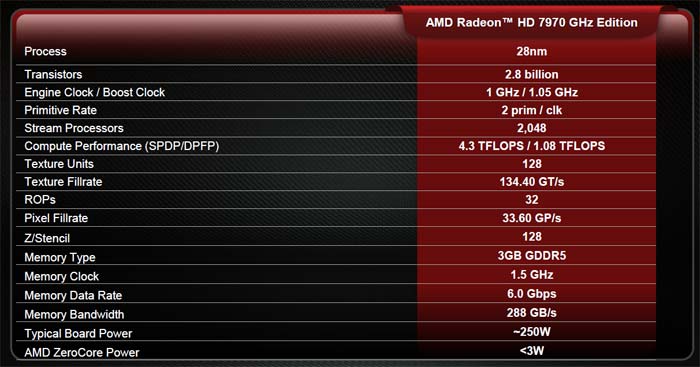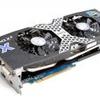Specs and Southern Islands
Specs and Southern Islands
Southern Islands
We always start off with a little introduction towards the entire product stack of reference products and specs and their respective code/family names. You've heard and learned about several codenames and that can be a little confusing so we start of with that first. It's simple really, in the market we have entry level, mainstream and high-end products. When you notice "Verde" that's entry level. Pitcairn will be the codename the mainstream products will hide under, and finally Tahiti is the codename for AMD's most high-end products in the 7000 range of products.
- Entry level = Verde = Radeon HD 7700 series
- Mainstream level = Pitcairn = Radeon HD 7800 series
- High-end level = Tahiti = Radeon HD 7900 series

Technology
For the 7000 series the GPU architecture was overhauled, AMD moved towards a 28nm process technology. The new cards are PCIe gen 3 compatible and there have been significant changes on power consumption.
With the launch of the Radeon HD 7000 series Eyefinity was updated towards version 2.0 DDM, audio is now fully supported (you hear audio on the actual monitor it's played of), a new 5x1 landscape mode is introduced, and you may now create custom multi-monitor resolutions.
Radeon HD 7970 GHz edition
Right again this is reference stuff, the clocks for the product tested today 'itself' are higher, we start of with the GPU overview (architecture we'll discuss later). AMD bakes GPU's on the 28nm node, in very simple wording that means they can put more transistors on a smaller silicon die area. The Tahiti core has 4.3 Billion transistors (the PDF we received (below) is showing 2.8 billion for some reason -- which in fact is pitcairn R7850/7870).
So make no mistake -- the same Tahiti XT silicon is being used though for the GHz edition, the Tahiti XT/XT2 GPUS are packed with 2048 shader processors harbored in Compute Units segments (32 of them).

Memory volume wise the 1GHz edition cards still pack a massive 3 Gigabyte of DDR5 memory. This is not done for bragging rights, but AMD simply takes Eyefinity and multiple monitor usage more serious, it is there where the extra memory makes sense. The memory bus of course is still 384-bit as well.
Packing so many transistors on a product is staggering, but if you can't apply a fast enough clock frequency it would become a problem. Well, that's not an issue for AMD either, the R7970 GHz edition is clocked at a very fast 1000 MHz with a boost capability of 1050 MHz.

The boost feature simply is dynamic clocking, the card has a set power target e.g. in very simple explanation the card does something like this: say the card is allowed to use 225 Watt, so if at 1000 MHz the card uses 175W it will then clock to 1050 MHz as there is room left in the power envelope bracket.
And honestly there's room enough to tweak towards a 1.1 GHz or even higher. That 384-bit memory is clocked at impressive speeds as well coming from 5.5 Gbps towards 6.0 Gbps, that's bandwidth up-to 288 GB/sec.

Boost clock example: look closely at the core clock chart, our test reaches the full power limit but the card will continuously try to boost to 1180 MHz, sometimes a bit lower and so on.

